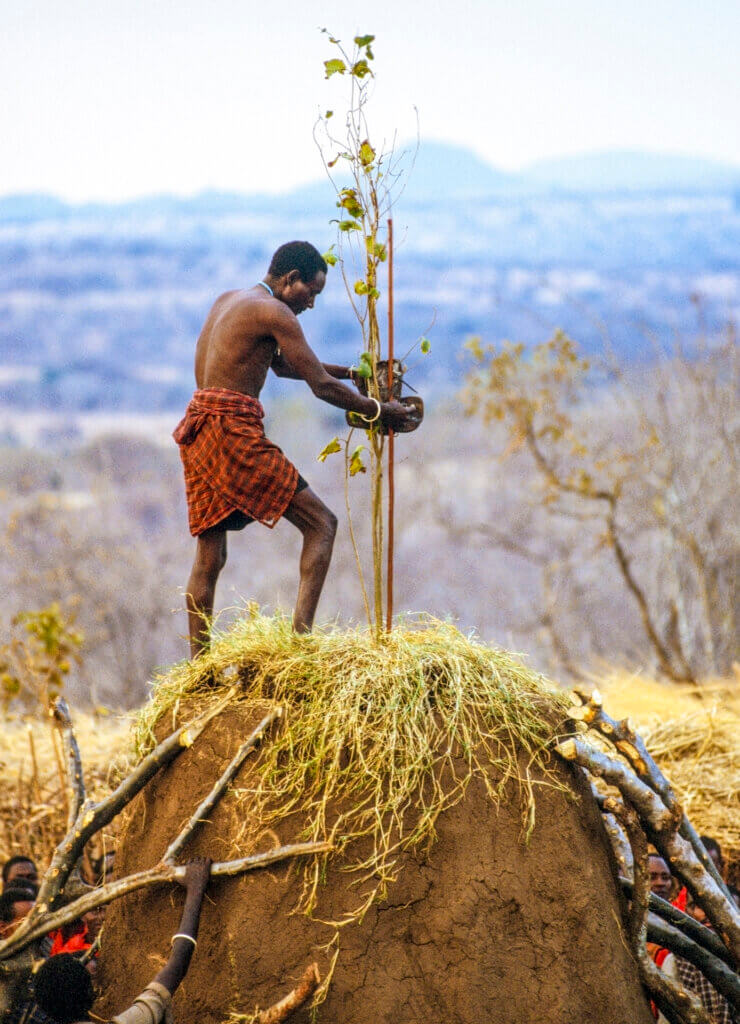A Perfect Elder
Barabaig Funeral
The Barabaig funeral of a “perfect elder”—one who has led a life respected for his or her good deeds and behaviour—is so rare and monumental that it serves to mark a particular era in their history, occurring just a few times throughout a century. Only a highly esteemed elder will be given a funeral of this style and magnitude. In addition to leading an exemplary life, a perfect elder must come from a prestigious lineage and have lived to more than forty-five or fifty years old, be known for his or her generous acts, and possess significant wealth.
The perfect elder must also have numerous children, including sons, who can afford to brew the large quantities of honey beer consumed throughout the ceremony that culminates eight to nine months afterthe elder’s death.
Our coverage of the beginning of this nine-month journey to the afterworld takes place in the hut of the deceased man, Gidahuyda Malomba. He is covered in a beautifully beaded hide and placed in a seated position on his last and youngest wife’s bed, the smoke from the fire beside him preserving his body.
Later that afternoon, the sons of Gidahuyda Malomba carry him out of the hut to lower him, still in a seated position and wrapped in the fresh hide of a sacrificed bull, into a deep pit at the center of the village compound. Women gathered outside the compound, crying with grief. Their coiled aluminum and brass jewelry, which they had worn for years around their necks and wrists, is removed by the elders for the nine-month period of mourning. Guests arrivecarrying large calabashes filled with honey beer as nourishment for all attending the funeral.
The climax of the ceremonial funeral of a perfect elder takes place nine months later, at which time warriors carry a sacred tuft of soil and grass on a platform of branches to the burial mound constructed over the grave. The nine foot burial mound is formed of earth packed over a conical frame of conifers.
On the final day of the funeral, hundreds of villagers surround the mound and watch the elders climb its forked ladders to cap the tomb with the tuft of soil and grass, symbolizing the hair of the deceased. Each son of the late elder then climbs the mound and plants a sapling branch in the “cap” and asks for blessings for his family and generation. The last son to climb up carries his father’s sandals; in silence he tenderly places them beside the sapling. In time, after the earth erodes, the arc of conifers takes root and becomes a living memorial to the respected perfect elder.
